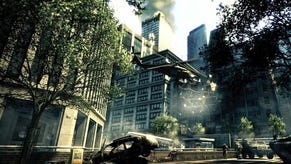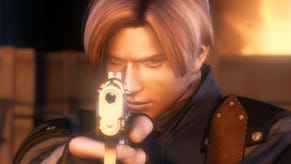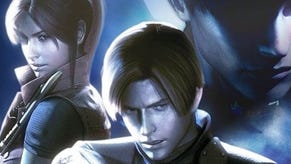Resident Evil: The Darkside Chronicles
Rail-time splattery.
Resident Evil 2! Resident Evil 2 is my favourite of all the Resident Evil games, refining and intensifying the suspense and isolation of the first and embedding it in an equally coherent and surprising new setting. Good news for me then, because Resident Evil: The Darkside Chronicles' chief producer Masachika Kawata, fresh from his work on Resident Evil 5 with Jun Takeuchi, describes the transition from last year's surprisingly good Umbrella Chronicles in similar terms.
"One of the biggest things is we wanted to put it in Umbrella Chronicles," he tells Eurogamer. "We just didn't have enough time to - so it felt like this was us finishing the job we started out to do initially. The second thing of course is yes, we know this is a very popular game within the series itself, and to be able to work with Cavia to create this, to base The Darkside Chronicles on this story, we knew was going to be a lot of fun."
The results - renewing the pixellated vows of friendship forged between Leon S. Kennedy and Claire Redfield in the Racoon City Police Station all those years ago - return the gameplay firmly to rails and wrest back control of the camera, which may seem like a step backwards, but it's done with dramatic intent. Kawata has clearly been watching Cloverfield (actually, he says so), and the game's camerawork is of the handy variety, full of bouncing runs, explosive disorientation and dramatic twists of the head.
In fact, the visuals are among the best the Wii has even seen, thanks in large part to game director Yasuhiro Seto and his team at developer Cavia, who have concocted scaled-down shaders and lens filters based on principles adopted from Xbox 360 and PlayStation 3 groundwork elsewhere. There's more environmental detail spread across the game's claustrophobic corridors than we saw in House of the Dead: Overkill, to use an obvious comparison, as well as a comparably diverse range of atmospheric effects, giving the zombies, dogs, giant spiders, wolfy things and man-size claw interruptions a solid foundation to strut their dramatic stuff.

Both characters are visible on-screen at all times, even in single-player, says Kawata, and the script is supposed to be more realistic than wisecracky so as not to detract from the gravity of the situation. Watching Seto play through the opening section, beginning in a fireball on the streets of Racoon City and trotting through alleys - flinching as zombies wrestle for you from the other side of a chain-link fence - and shops on its way to the front doors of the Police Station, the handicam dynamic looks as though it might interfere with aiming by jiggling zombie heads around, but in keeping with the sense of urgency, you don't have to kill all the zombies to move on.
The game also revisits plenty of Resident Evil 2 touchstones, like the zombie attacking a shopkeeper early on, and a headspin to meet the sight of zombies banging on the glass, enhanced with a stab of frantic strings from the low-key soundtrack. There are numerous cinematic interludes, like rescuing Claire from a zombie at her throat. Later in the demo a SWAT van explodes and knocks Leon down, so Claire has to defend him while he clears his head, and there are a few branching pathways to consider, like ditching the streets to descend a stairway (only to be mobbed by crows). There are explosive barrels to hit and unlockables, too.





